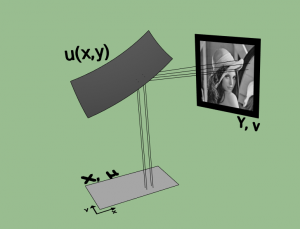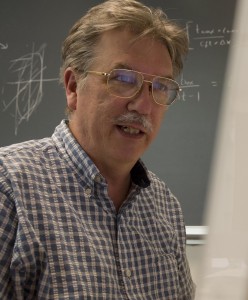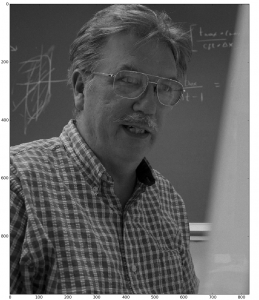Section: Application Domains
Freeform Optics
Following the pioneering work of Caffarelli and Oliker [92], Wang [184] has shown that the inverse problem of freeforming a convex reflector which sends a prescribed source to a target intensity is a particular instance of Optimal Transportation. This is a promising approach to automatize the industrial design of optimised energy efficient reflectors (car/public lights for instance). We show in figure 10 the experiment setting and one of the first numerical simulations produced by the ADT Mokabajour.
The method developed in [68] has been used by researchers of TU Eindhoven in collaboration with Philips Lightning Labs to compute reflectors [167] in a simplified setting (directional light source). Another approach, based on a geometric discretization of Optimal Transportation has been developed in [8], and is able to handle more realistic conditions (punctual light source).
Solving the exact Optimal Transportation model for the Reflector inverse problem involves a generalized Monge-Ampère problem and is linked to the open problem of c-convexity compatible discretization we plan to work on. The corresponding software development is the topic of the ADT Mokabajour.
Software and industrial output.
See section 4.3 below for softwares. These methods will clearly become mainstream in reflector design but also in lense design [170]. The industrial problems are mainly on efficiency (light pollution) and security (car head lights) based on free tailoring of the illumination. The figure below is an extreme test case where we exactly reproduce an image. They may represent one of the first incursion on PDE discretisation based methods into the field of non-imaging optics.





